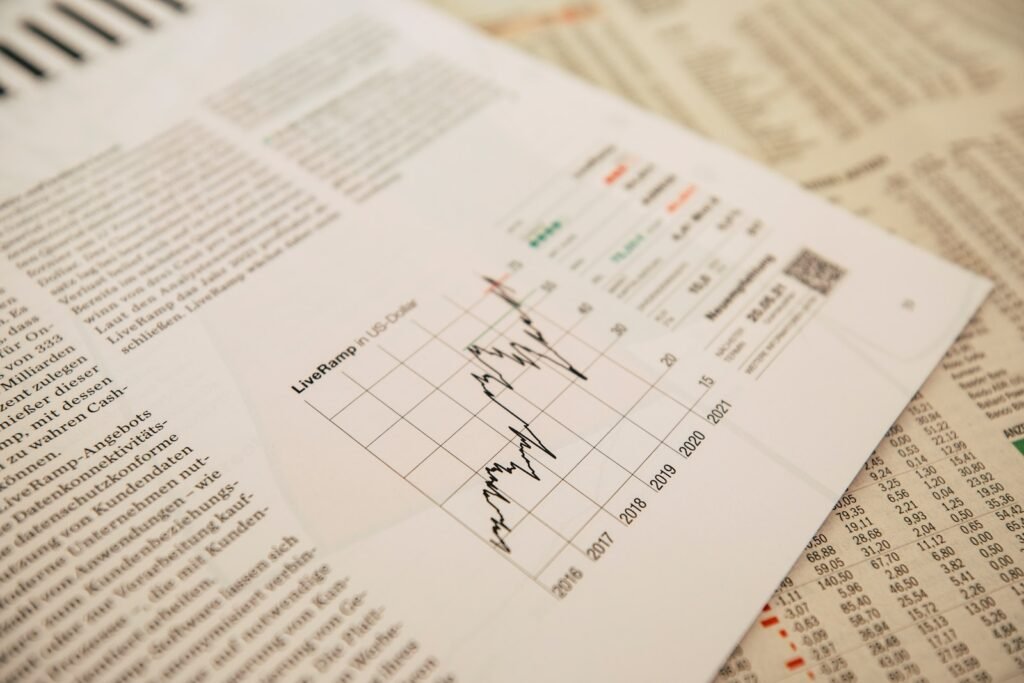Dollar Cost Averaging: The Smart Investor’s Strategy For Consistent Gains
When it comes to navigating the ever-changing landscape of investing, we all yearn for a strategy that guarantees consistent gains. In our pursuit of financial success, we find solace in the concept of Dollar Cost Averaging (DCA): a smart investor’s approach that cultivates a sense of stability and reliability.
By employing this method, we are able to harness the power of consistency while minimizing risk and maximizing long-term gains.
At its core, Dollar Cost Averaging is an investment technique that allows us to spread our investments over time rather than making large lump sum purchases. This practice not only helps mitigate the impact of market volatility but also affords us the opportunity to take advantage of fluctuations in prices.
By steadily contributing funds at regular intervals, we can navigate the highs and lows of the market with a measured approach, ensuring that our investments align with our long-term goals.
By adopting Dollar Cost Averaging as our chosen investment strategy, we become part of a community driven by prudence and foresight. We recognize that successful investing is not about chasing quick wins or attempting to time the market perfectly; rather, it is about building wealth gradually through disciplined contributions.
With DCA as our guiding principle, we embrace patience and consistency as essential qualities on our journey towards financial prosperity.
So join us as we delve into the world of Dollar Cost Averaging – where steady progress leads to substantial gains.
Key Takeaways
- Dollar cost averaging is a strategy for consistent gains in investing.
- It helps mitigate market volatility and take advantage of price fluctuations.
- DCA is about building wealth gradually through disciplined contributions.
- It removes the need for making difficult decisions about market timing.
Understanding Dollar Cost Averaging
Dollar cost averaging allows investors to steadily buy more shares over time, reducing the impact of market fluctuations on their overall investment. It is a strategy where investors invest a fixed amount of money at regular intervals, regardless of the share price. By doing so, they automatically buy more shares when prices are low and fewer shares when prices are high. This approach helps to average out the cost per share and minimize the risk associated with timing the market.
One of the key benefits of dollar cost averaging is that it removes the need for making difficult decisions about when to enter or exit the market. Instead, investors can focus on consistently investing over time, taking advantage of both ups and downs in the market. This strategy also provides a sense of discipline and consistency in one’s investment approach, which can help mitigate emotional decision-making based on short-term market trends.
Furthermore, dollar cost averaging reduces volatility by spreading investments across different periods. It smooths out fluctuations in share prices and reduces exposure to sudden market swings. This makes it an ideal strategy for long-term investors who prioritize consistent gains rather than trying to time the market for short-term profits. By sticking with this disciplined approach, investors can increase their chances of achieving steady growth over time.
Moving forward into discussing the benefits of dollar cost averaging, it’s important to understand how this strategy can help investors achieve consistent gains while minimizing risks.
The Benefits of Dollar Cost Averaging
By utilizing this approach, we can effectively mitigate the impact of market volatility and steadily grow our investment portfolio.
Dollar cost averaging allows us to spread out our investments over time, rather than trying to time the market and make large lump sum investments. This strategy helps to smooth out the highs and lows of the market, reducing the risk of making poor investment decisions based on short-term fluctuations.
One of the main benefits of dollar cost averaging is that it takes away the pressure of trying to predict market movements. Instead of worrying about whether prices are high or low at any given moment, we can focus on consistently investing a fixed amount at regular intervals. This disciplined approach helps to remove emotions from our investment decisions and prevents us from making impulsive moves based on fear or greed.
Furthermore, dollar cost averaging allows us to potentially take advantage of market downturns. When prices are low, we automatically buy more shares with our fixed investment amount. This means that during bear markets or periods of economic uncertainty, we are able to purchase more assets for a lower average price. Over time, as markets recover and prices rise again, this can lead to significant gains in our investment portfolio.
By understanding the benefits of dollar cost averaging, we can see why it is a popular strategy among smart investors. It provides a systematic approach that helps us navigate through market volatility while steadily growing our investments over time.
In the next section, we will explore how to implement dollar cost averaging into your own investment plan without taking unnecessary risks or making common mistakes.

How to Implement Dollar Cost Averaging
When implementing dollar cost averaging, we need to consider two key points:
- Setting a regular investing schedule is crucial. It allows us to consistently invest a fixed amount of money at predetermined intervals, regardless of market conditions.
- Choosing the right investment vehicle is essential. It helps align our financial goals with the appropriate asset class or instrument.
Prioritize these two points in order to implement dollar cost averaging effectively.
Setting a Regular Investing Schedule
Creating a consistent investing schedule is the key to maintaining a successful dollar cost averaging strategy. By setting a regular investing schedule, we ensure that we’re continuously putting money into the market at predetermined intervals. This helps us take advantage of both market highs and lows, as our investments are spread out over time.
Here are five reasons why setting a regular investing schedule is essential for successful dollar cost averaging:
- Consistency: Having a set schedule ensures that we consistently invest in the market, regardless of its current state.
- Discipline: Following a regular investing schedule helps us stay disciplined and avoid making impulsive investment decisions based on short-term market fluctuations.
- Mitigates emotions: A scheduled approach allows us to remove emotions from our investment decisions, as we aren’t swayed by daily market movements.
- Averages out volatility: Regularly investing mitigates the impact of short-term volatility on our overall investment performance.
- Automated convenience: Setting up automatic contributions makes it easy and convenient to stick to our investing plan without having to actively manage it.
By implementing a regular investing schedule, we ensure we remain committed to our dollar cost averaging strategy.
Now let’s explore how choosing the right investment vehicle plays an integral role in maximizing returns.
[Subsequent section: Choosing the Right Investment Vehicle]
Choosing the Right Investment Vehicle
To maximize our returns, it’s crucial to choose the right investment vehicle for our financial goals and risk tolerance. The investment vehicle we select will determine how our money grows over time.
There are various options available, such as stocks, bonds, mutual funds, and exchange-traded funds (ETFs). Each of these vehicles comes with its own set of risks and potential rewards. Stocks offer the potential for high returns but also come with greater volatility. Bonds, on the other hand, are generally considered safer but may provide lower yields. Mutual funds and ETFs can offer diversification by investing in a mix of assets.
When choosing an investment vehicle, it’s important to consider our financial goals and risk tolerance. Are we looking for long-term growth? Or do we need more stability? Additionally, understanding the fees associated with each investment option is crucial as they can eat into our overall returns. By carefully evaluating these factors and consulting with a financial advisor if needed, we can make an informed decision that aligns with our objectives.
Transitioning into the next section about maximizing the power of consistency: Now that we have chosen the right investment vehicle, let’s explore how consistent investing plays a vital role in building wealth over time without exposing ourselves to unnecessary risks or uncertainties.
Maximizing the Power of Consistency
In order to maximize the power of consistency, we must embrace the cyclical nature of the market and ride the waves of both highs and lows. It’s important to understand that markets go through periods of volatility and stability.
By staying invested during these ups and downs, we can take advantage of the long-term growth potential that the market offers. This means resisting the urge to sell when prices are falling and buying when prices are rising.
Consistency is key in investing because it allows us to benefit from compounding returns over time. By regularly contributing to our investments, we can take advantage of dollar cost averaging, which smooths out the impact of market fluctuations.
When prices are high, our fixed investment amount buys fewer shares, but when prices are low, our fixed investment amount buys more shares. Over time, this strategy can lead to a lower average cost per share and potentially higher overall returns.
By understanding and embracing the cyclical nature of the market, we can make informed decisions about our investments. It’s important to remember that investing is a long-term game and short-term fluctuations should not deter us from our goals.
By staying consistent and riding out market cycles, we position ourselves for consistent gains in the future.
In managing risk with dollar cost averaging, we will explore strategies for mitigating downside risks while maximizing upside potential. By diversifying our portfolio across different asset classes or sectors, we can spread out risk and minimize exposure to any single investment.
Additionally, setting clear investment goals based on individual risk tolerance and time horizon can help us make informed decisions about how much risk we’re willing to take on. With dollar cost averaging as our tool for consistent gains, managing risk becomes an integral part of building a successful investment strategy.
Managing Risk with Dollar Cost Averaging
When it comes to managing risk with dollar cost averaging, there are two key points that we need to consider.
We need to diversify our investment portfolio and stay disciplined during market volatility.
Diversifying our portfolio allows us to spread out our investments across different asset classes. This helps to reduce the impact of any single investment on our overall portfolio.
Staying disciplined during market volatility means sticking to our dollar cost averaging strategy even when the market is experiencing ups and downs. This approach minimizes the impact of short-term market fluctuations on our long-term returns.
Diversifying Your Investment Portfolio
By diversifying our investment portfolio, we’re able to spread out our risks and enhance the potential for consistent gains. When we invest in a variety of assets such as stocks, bonds, real estate or REITs, or commodities, we reduce the impact that any single investment can have on our overall portfolio.
This means that if one investment underperforms or experiences a downturn, the other investments may still be performing well and mitigating our losses. Diversification allows us to take advantage of different market conditions and sectors that may perform differently over time. It helps us avoid putting all of our eggs in one basket and reduces the likelihood of significant losses.
Furthermore, diversifying our investment portfolio allows us to benefit from various sources of returns. Different asset classes tend to have different risk-return profiles, meaning they offer varying levels of risk and potential reward. By spreading our investments across multiple asset classes with different risk characteristics, we can potentially achieve a more balanced return profile while managing risk effectively.
This approach helps us navigate through uncertain economic conditions or market turbulence without being overly dependent on the performance of a single asset class.
As we explore staying disciplined during market volatility in the subsequent section, it’s important to remember that diversifying your investment portfolio is just one step towards achieving consistent gains.
Staying Disciplined During Market Volatility
Stay calm and don’t let the roller coaster of market volatility throw you off balance – remember, it’s just an exhilarating ride in the amusement park of investing.
Market volatility is a natural part of the investment journey, and it can be tempting to react emotionally to sudden price swings. However, as smart investors, we need to stay disciplined and focused on our long-term goals. By maintaining a level head during market turbulence, we can avoid making rash decisions that could harm our portfolio.
During periods of high market volatility, it’s crucial to stick to our investment strategy and not let fear dictate our actions. This means resisting the urge to sell when prices are falling or buying impulsively when they are rising rapidly. Instead, we should remind ourselves of the principles of dollar cost averaging and trust in its ability to smooth out market fluctuations over time. By consistently investing at regular intervals regardless of market conditions, we can take advantage of both high and low prices and reduce the impact of short-term volatility on our overall returns.
Now that we understand how important it is to stay disciplined during market volatility, let’s move on to tracking and evaluating our progress. It’s essential for us as smart investors to have a clear understanding of how well our investment strategy is performing over time.

Tracking and Evaluating Your Progress
When it comes to investing, monitoring our investment performance is crucial. It allows us to evaluate the progress we’re making and determine if we need to make any adjustments.
By regularly tracking our investments, we can identify trends and patterns that may affect our overall strategy. If necessary, we can then make informed decisions to adapt to changing market conditions or achieve better results in the long run.
Monitoring Your Investment Performance
As you monitor your investment performance, you’ll be able to gauge the effectiveness of your dollar cost averaging strategy and make any necessary adjustments along the way. By keeping a close eye on your investments, you can track how they’re performing over time and assess whether they align with your goals.
This monitoring process allows you to evaluate the success of your strategy and determine if any modifications need to be made.
In order to effectively monitor your investment performance, it’s important to establish benchmarks and compare your results against them. This can be done by tracking key metrics such as return on investment (ROI), portfolio growth, and market trends. As you analyze these data points, it becomes easier to identify patterns or areas that may require attention.
For instance, you may notice consistent positive returns in certain sectors while others underperform. Market volatility might impact the overall growth rate of your portfolio.
By closely observing these factors, you gain valuable insights into how well your dollar cost averaging approach is working for you. This knowledge empowers you to take appropriate actions if needed, such as adjusting the allocation of funds or diversifying investments further.
As we delve deeper into making adjustments as needed, it’s vital to understand that monitoring alone doesn’t guarantee optimal results for every investor. However, by consistently evaluating and reassessing our investment performance through thorough monitoring, we can proactively adapt our strategy when necessary.
Making Adjustments as Needed
In order to ensure consistent gains with dollar cost averaging, it is crucial to continually monitor our investment performance. By keeping a close eye on the market trends and the performance of our investments, we can make informed decisions about when adjustments are needed. This allows us to take advantage of opportunities for growth and protect ourselves from potential losses.
Now, let’s talk about making adjustments as needed in our dollar cost averaging strategy. As smart investors, we understand that markets are constantly changing and there may be times when our initial investment plan needs modifications. These adjustments could involve increasing or decreasing the amount of money we invest regularly, switching to different securities or funds, or even changing our overall investment strategy based on new information or market conditions.
To help illustrate the importance of making timely adjustments, let’s consider a hypothetical scenario using a table:
| Scenario | Investment Performance | Adjustment |
|---|---|---|
| Scenario A: Market downturn | Negative returns | Increase regular investment amount |
| Scenario B: Market upswing | Positive returns | Maintain current investment plan |
| Scenario C: New investment opportunity arises | Potential high returns | Allocate additional funds |
By actively monitoring our investments and making necessary adjustments, we can optimize our dollar cost averaging strategy for consistent gains. It is important to remember that these adjustments should be based on careful analysis and research rather than emotional reactions to short-term market fluctuations.
With a solid understanding of how to monitor our investment performance and make appropriate adjustments, we can now delve into the topic of long-term gains with dollar cost averaging.
Long-Term Gains with Dollar Cost Averaging
Contrary to popular belief, dollar cost averaging isn’t just a short-term strategy; it’s a long-term approach that can lead to consistent gains.
By dollar cost averageing in our investing regularly over an extended period of time, we can take advantage of market fluctuations and ultimately reduce the impact of volatility on our portfolio. This method allows us to buy more shares when prices are low and fewer shares when prices are high, effectively averaging out the cost per share over time.
To fully understand the potential long-term gains with dollar cost averaging, let’s consider these key points:
- Mitigates timing risk: Trying to time the market perfectly is nearly impossible, even for experienced investors. Dollar cost averaging eliminates the need for precise market timing by spreading investments over time. This reduces the risk of making poor investment decisions based on short-term market fluctuations.
- Encourages disciplined investing: With dollar cost averaging, we commit to investing a fixed amount at regular intervals, regardless of market conditions. This helps instill discipline and prevent emotional decision-making based on fear or greed. It ensures that we consistently invest in both up and down markets, which can lead to better long-term results.
- Takes advantage of compounding: By consistently investing over a longer period, we allow our investments to benefit from compounding returns. Compounding refers to earning returns not only on our initial investment but also on any reinvested dividends or interest. Over time, this can significantly boost our overall returns.
- Reduces regret and second-guessing: Dollar cost averaging provides peace of mind as it removes the pressure of making large lump-sum investments all at once. Instead, we spread our investments out gradually, reducing the likelihood of regretting a poorly timed investment decision.
Dollar cost averaging isn’t simply a short-term strategy but rather a powerful long-term approach that allows us to navigate market volatility while potentially achieving consistent gains over time. Its ability to mitigate timing risk, encourage disciplined investing, take advantage of compounding returns, and reduce regret make it an attractive strategy for investors seeking stability and growth in their portfolios.
Frequently Asked Questions
What are some common misconceptions about dollar cost averaging?
Some common misconceptions about dollar cost averaging include the belief that it guarantees profits and that it only works in a bull market. However, careful analysis reveals that these assumptions are not always accurate.
Can dollar cost averaging be used for any type of investment, or is it only effective for certain asset classes?
Dollar cost averaging can be applied to various investment types. It allows us to navigate the unpredictable market by buying assets at regular intervals, reducing the risk of investing all at once.
Is it better to use a lump sum investment or dollar cost averaging when entering the market?
When entering the market, it is generally better to use dollar cost averaging rather than a lump sum investment. This strategy allows us to mitigate risk by spreading out our investments over time and potentially benefiting from market fluctuations.
How long should someone continue dollar cost averaging before reassessing their investment strategy?
Before reassessing our investment strategy, we should continue dollar cost averaging for a sufficient period. This ensures consistent gains and allows us to make informed decisions based on long-term market trends.
Are there any tax implications or considerations to be aware of when utilizing dollar cost averaging?
When utilizing dollar cost averaging, it is important to consider potential tax implications. Consult a tax professional to understand how your investment strategy may affect your taxable income and any associated reporting requirements.
Conclusion
In conclusion, dollar cost averaging is a smart strategy for consistent gains in the world of investing. By spreading out your investments over time, you can mitigate the risk of market fluctuations and take advantage of both highs and lows.
This method allows you to buy more shares when prices are low and fewer shares when prices are high, ultimately leading to a lower average cost per share.
The benefits of dollar cost averaging cannot be overstated. It provides a disciplined approach to investing, allowing you to avoid making emotional decisions based on short-term market trends. Instead, you focus on the long-term growth potential of your investments.
This strategy also helps reduce the impact of market volatility, as it smooths out the peaks and valleys by consistently buying at different price points.
Implementing dollar cost averaging is relatively simple. Set up automatic contributions to your investment account at regular intervals and stick with it over time. By doing so, you ensure that you are consistently adding to your portfolio regardless of market conditions. This approach takes away the need for timing the market or trying to predict its movements.
While dollar cost averaging may not provide instant gratification or massive gains overnight, it is a prudent strategy that has stood the test of time. The key is consistency – staying committed to your investment plan through thick and thin. Over time, this approach can lead to significant long-term gains.
So why wait? Start implementing dollar cost averaging today and watch as your investments grow steadily over time. Remember, patience and discipline will be rewarded in the end!

Dr. Lincoln C. Wood teaches at the University of Otago in New Zealand. He is an avid investor and educator. He loves cash flow, income, and dividends when investing. He likes to buy undervalued companies with strong advantages and earnings growth.




